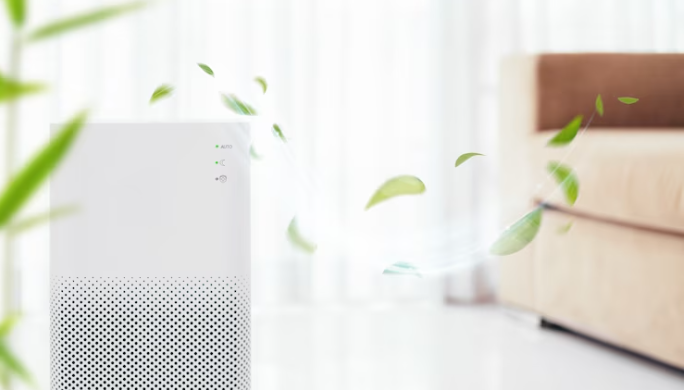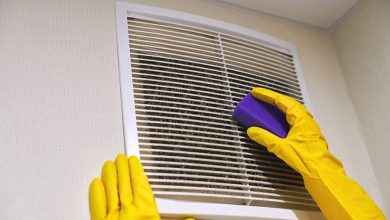The Environmental Impact of Air Purifiers

Air purifiers are essential home appliances that remove harmful pollutants from indoor air. These include odors, smoke, dust, pet dander, and bacteria.
They may also help alleviate allergy and asthma symptoms. Pollutants such as pet dander, mold spores, and dust mites can cause these illnesses.
Environmental Impact
Air purifiers claim to remove pollutants from indoor environments. While some are effective at eliminating airborne particles that are hazardous to health, others can create other issues and should be avoided.
Allergens:
Pet dander, pollen, and dust mites can trigger symptoms in those with allergies or respiratory conditions. Allergens also irritate your bronchioles and make it harder to breathe.
VOCs:
VOCs are chemicals produced by various materials, like laminates and paints as well as fabrics and upholstered furniture. Overexposure to VOCs may cause respiratory problems, eye irritation, headaches, and more.
Air purifiers with filters designed to trap VOCs can help reduce their amount in your home. These filters, made of activated carbon or a combination of materials, have been found to be highly effective at capturing these pollutants.
Ozone:
Some air purifiers produce ozone to clean the air. Unfortunately, this ozone is toxic to humans and can react with chemical pollutants in the atmosphere to form more hazardous forms of these compounds.
Smoke:
If one of your family members smokes, using an air purifier to eliminate smoke from your home could be beneficial. Studies have revealed that cigarette smoke has been linked to numerous illnesses such as heart disease and COPD (chronic obstructive pulmonary disease).
Odor:
While some smells may be pleasant, others can be quite unpleasant. Chemicals may cause these odors like benzene and formaldehyde which may pose serious respiratory problems as well as being more hazardous than other odors.
Air purifiers with HEPA technology filters can capture fine particulates, decreasing the likelihood that your home will have unhealthy levels of these particles. They also improve air quality by reducing PM2.5 particles – the most hazardous particles present in the air – from entering your atmosphere.
Energy Impact
Air purifiers remove indoor pollutants such as smoke, bacteria, pet dander, and pollen from the air. These substances can lead to serious health issues like respiratory illnesses or cancer.
A clean and healthy environment can reduce your risk for disease, enhance your quality of life, and even boost energy levels. One great way to achieve this is by adding air purifiers to your home.
When selecting an air purifier for your space, it is essential to select one that has a suitable size and delivers a high Clean Air Delivery Rate (CADR) so the air can be filtered quickly. Additionally, look for air purifiers with HEPA filtration systems.
If you have children or other family members with respiratory disorders like asthma, allergies or COPD, investing in an air purifier tailored for their specific needs can be a great decision for the future of your family’s health.
When shopping for an air purifier, ensure it produces minimal ozone gas. Ozone is a hazardous vapor which can harm respiratory systems and be toxic to those with asthma.
Additionally, the size and shape of an air purifier can have a significant effect on how much electricity it uses. A smaller, portable purifier requires less power than larger, stationary models.
Air purifiers use anywhere from 40 to 200 watts of electricity, depending on the model. If you’re concerned about power consumption, opt for an Energy Star Certified model instead.
The electricity cost to run an air purifier depends on its wattage and how much air it filters per hour. Generally speaking, the higher its consumption is, the more expensive it will be to operate.
Electricity prices can vary by region and may be higher or lower at certain times of day, so it’s best to get an estimate for your area.
Air purifiers are an easy and efficient way to improve indoor air quality, helping you avoid illnesses or discomfort caused by breathing in contaminated air. Furthermore, they have the potential to reduce medical expenses associated with treating or preventing respiratory diseases and other ailments.
Life Cycle Impact
A quality home air purifier can help keep your home healthy and clean by reducing indoor air pollution. This may reduce symptoms associated with asthma, allergies, as well as respiratory conditions like the common cold or flu.
An air purifier can effectively eliminate dust, pet dander, pollen, bacteria and fungi from your air. Some purifiers are even designed to eliminate odors such as cooking oil or spices.
Many people are allergic to pollen, dust and other indoor air allergens. These substances can lead to asthma, rhinitis and other respiratory ailments.
Studies have demonstrated that HEPA filters can filter out pollen and cigarette smoke from the air, making it easier for you to breathe. Your HEPA filter should be changed at least every two to three months, depending on which model you select.
An air purifier not only removes airborne allergens, but it can also filter out ozone. Ozone is a hazardous gas that can harm your lungs and cause shortness of breath, coughing, and chest pain.
HEPA
Air purifiers with HEPA and activated carbon filters can significantly reduce the concentration of bioaerosols in the environment, which is beneficial to all occupants, particularly children with respiratory problems.
Another way to reduce the environmental impact of an air purifier is to combine it with other household cleaning tasks, like washing dishes and drying clothes. Doing this is often more efficient than simply relying on the purifier alone.
When purchasing an air purifier, it’s essential to factor in its lifespan. This can be a lengthy process and may involve additional energy costs.
An energy-saving air purifier can save you money on your electricity bill and help you forgo costly maintenance and repair services.
The environmental impact of an air purifier depends on where it’s used and how much power it consumes. This complex process may seem confusing to consumers, so it’s always best to consult a professional before making a purchase.
For instance,
The energy consumption of a portable air purifier with an active filter may be higher than that of a stationary unit due to their inability to be plugged in and need to work continuously in order to provide clean air.
Material Impact
Air purifiers are an indispensable part of homes and businesses alike. Not only do they reduce indoor air pollution, which has been linked to several health conditions like asthma and cardiovascular disease, but they can also help combat other air contaminants that could negatively affect indoor air quality.
The filter is the most essential element of any machine, and they come in various styles. A HEPA (high efficiency particulate air) filter utilizes either borosilicate glass fibers or plastic fibers bound together with up to 5% acrylic binder for strength; carbon filters offer similar capabilities but use a more durable material.
Another popular air purifier is an electrostatic precipitator, which works by running extremely high positive direct current voltages through steel wires set between grounded steel charging plates to generate charged particles called ions that attach themselves to airborne contaminants such as dust, pollen and pet dander. This type of air purifier has the added bonus of being able to reduce both odors and dust accumulation.
Other filters utilize ultraviolet light, which can both kill germs and eliminate odors. These filters typically operate inside a sealed compartment that can be vented.
Finally
some air purifiers use a photocatalytic oxidation process that utilizes light to break down harmful airborne pollutants. While it’s not exactly a scientific breakthrough, this is an effective way to improve air quality and may even save lives in certain cases.
Overall, the most efficient air purifiers are those equipped with a HEPA filter and electrostatic precipitator. Studies have demonstrated that this combination significantly improves indoor air quality in homes and workplaces, making them an ideal choice for anyone suffering from allergies or asthma.




